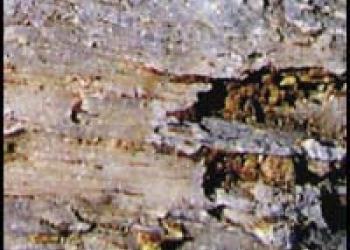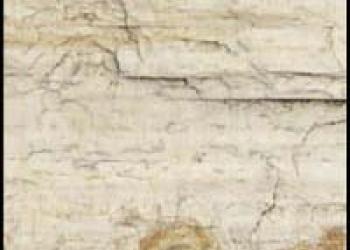Rocks & Minerals
Each year, thousands of rockhounds, pebble puppies and persons interested in looking for rocks visit Crook County, Oregon. The geology of central Oregon is unique with a wide variety of rock types in a relatively small area. Crook County is rightfully known as the rockhound capital of the world.
Each year, thousands of rockhounds, pebble puppies and persons interested in looking for rocks visit Crook County, Oregon. The geology of central Oregon is unique with a wide variety of rock types in a relatively small area. Crook County is rightfully known as the rockhound capital of the world.
There are areas that are free to the public in search of agate, jasper, limbcast, petrified wood, moss, dendrite and angel wing. Rockhounding areas are managed by both the Bureau of Land Management and the Ochoco National Forest. Please note that 'rockhound collection sites' are for personal use only; commercial resale is not allowed.
The material sought by rockhounds in central Oregon is so diverse that it would take more space than is available here just to cover it briefly.
The six major categories of material available include: Agate, Jasper, Limb Casts, Obsidian, Petrified Wood, and Thunder Eggs.
Less common rocks and minerals found in central Oregon include opal, amethyst, gem quality calcite, cinnabar, selenite (gypsum), and amygdaloid nodules.
To purchase the rockhound map online through Avenza, click here.
All questions about mining permits and related minerals activities on the Ochoco National Forest and Crooked River National Grassland should be directed to Geologist, Bart Wills at: barton.wills@usda.gov.
To find out more about mining on National Forest System lands, visit the links below, or visit the national Forest Service Minerals and Geology Management web page.
Important information about mining on National Forest System lands
Mining in National Forests: A paper that gives background information on the Forest Service's mining policy.
Forest Service Minerals Program Policy: To foster and encourage mineral development on National Forest System lands in an ecologically sound manner.
36 CFR 228 Subpart A: Forest Service regulations for locatable minerals operations and surface management.
Prospecting for Gold: A US Geological Survey paper about gold prospecting.
Oregon Guidelines for Timing of In-Water Work: The Oregon Department of Fish and Wildlife, (ODFW), under its authority to manage Oregon’s fish and wildlife resources has updated these guidelines for timing of in-water work. The guidelines are to assist the public in minimizing potential impacts to important fish, wildlife and habitat resources.
Mineral Material Permits
Personal use permits may be obtained for collection of mineral material products such as: landscape rock for patios, walkways, walls and gardens and/or pit run rock for driveways and paths.
For small quantities of personal use products, there is no minimum fee. For large quantities, or commercial use, a fee is charged.
For most products, there are regulations covering when, how, and where collection is allowed. The intent of these regulations is to ensure continued availability and sustainability of our country’s forest resources.
For more information about how to get a permit, fees, product availability, or regulations covering collection, please contact the Forest Service office nearest your intended activity.
Central Oregon has been shaped by numerous and varied volcanic events that began millions of years ago and continue to the present. A chain of volcanoes in eastern Oregon began erupting about 50 million years ago during a time of tropical climate conditions that supported lush woodlands. The volcanic and sedimentary rocks from these volcanoes are known as the Clarno Formation. During this time period, ash on steep slopes of volcanoes frequently mixed with tropical rains and produced large-scale mudflows that swept across the landscape, entombing plants and animals, preserving them as fossils. Entombed trees and wood debris became much of the petrified wood that rockhounds in central Oregon collect today.
After the eruptive activity of the Clarno volcanoes ceased, a short period of erosion took place. Beginning about 33 million years ago, another set of volcanoes produced the lava flows and ash deposits of the John Day Formation. By that time, the climate was cooler and more temperate and the plants and animals were different from those that lived in the shadow of the Clarno volcanoes. Like the Clarno volcanoes, eruptions from the John Day volcanoes also buried and preserved the remains of plants and animals.
The earliest eruptions of the Cascade Mountain Range began about 40 million years ago. Successive lava flows began to pile high enough to form a barrier to moist Pacific storms and eventually transformed the central Oregon climate into the dry high desert conditions of today. The present day high Cascade peaks that make up the familiar backdrop of central Oregon all formed in the last million years.
During past volcanic activity, superheated groundwater circulated through the rocks, filling the cracks and voids with quartz, calcite, cinnabar, and other minerals. Today the Clarno and John Day formations are highly eroded, exposing many different rock layers rich with semi-precious gems, creating a paradise for rockhounds. Many members of the quartz family of semiprecious gemstones are represented in these deposits including crystalline quartz, amethyst (rare), and various types of chalcedony such as agate and jasper. A particular favorite of rockhounds are the agate-filled nodules known as thunder eggs, the Oregon state rock.
Another notable series of volcanic events occurred about 4.9 million years ago in the area southeast of Hampton. Multiple flows of molten volcanic glass oozed out of the ground at Glass Buttes, producing a vast landscape covered with obsidian. Many of the hills in this area are literally solid glass! Today, rockhounds visiting the Glass Buttes area can find gold sheen, silver sheen, fire sheen, rainbow, midnight lace, double flow, and mahogany varieties of obsidian.
Map Products
Rockhounding Map

Back of Map

Central Oregon Rockhound Materials
Agate

Agate is a translucent cryptocrystalline variety of quartz and is the most common and variable semiprecious gemstone. It often forms in fractures or other cavities in volcanic rocks. Where weathered out of its host rock, agate is found in concentrations or scattered widely as "float." The local forms are usually white to colorless, often with a layered appearance. Those that contain a distinctive swirled grain such as "angel wing" or tube agate are more highly prized. The best contain designs formed by mineral or other substances which have become a part of the agate itself. These are known as plume, moss, sagenite, dendrite, etc. They may contain what appear to be miniature trees (dendrites) or other plants embedded under the surface. In semiprecious gem stones, it is often the "impurities" that make them distinctive and desirable. Unfortunately, it is often necessary to cut or polish the material to see how good it is. Many rockhounds consider this part of the fun.
Rockhound sites to find this material include: Eagle Rock, Fischer Canyon, Maury Mountains (Moss Agate), and North Ochoco Reservoir.
Thunder Eggs

Thunder eggs are the most distinctive and one of the most sought after stones in Oregon. On March 5, 1965, it became the official state rock. Thunder eggs are spherical (ball-shaped) masses of rock that range in size from less than an inch to several feet in diameter. Most are a little larger than a baseball. The exterior surface is an uninteresting, drab rind, often with a knobby appearance. It is the core which holds the prized material. When sawed open, the interior may be filled with crystals, agate, jasper, a powdery calcite, or there may be just an empty cavity. Many thunder eggs reveal exquisite and colorful designs ranging from five-pointed stars to miniature landscapes.
Rockhound sites to find this material include: Whistler Springs and White Fir Springs Collection Site.
Jasper

Jasper is an opaque variety of cryptocrystalline quartz similar to agate that also occurs in a wide variety of colors. Red and yellow varieties are common while green is more scarce. "Morrisonite" jasper thunder eggs may have tan, dark brown, or even purple cores. Rough jasper is generally dull and must be moistened or polished to bring out the color and sheen. "Picture jasper" is most prized for the picture-like designs which may appear on the cut surfaces. A material similar in appearance, in colors of blue, green, and brown, is locally known as vistaite. It is rare, and is a highly silicified form of rhyolite rather than true jasper.
Rockhound sites to find this material include: Fischer Canyon and White Fir Springs Collection Site.
Limb Casts

Limb casts are deposits formed in cavities in volcanic ash which were once occupied by pieces of wood. The hot ash caused the wood to completely burn out, leaving cavities or molds in the shape of the wood. At a later time, agate was deposited in the cavity (like a mold) in the same shape as the original limb, hence the name "limb cast." Many specimens exhibit detailed bark, knot, and wood textures on the surface. Limb cast with a green or pink hue are highly prized.
Rockhound sites to find this material include: Paulina (Congleton Hollow/Dendrite Butte).
Obsidian

Obsidian, a volcanic glass, is perhaps one of the easiest rock materials to identify. Brittle and usually black in color, it exhibits an extremely shiny surface when broken. The most desirable obsidian types include gold sheen, silver sheen, fire sheen, rainbow, midnight lace, double flow, and mahogany. Chips or broken edges are as sharp as broken glass, and should be handled with care. The area around Glass Buttes has been designated for recreational obsidian collecting; mining claims may not be filed for obsidian or chalcedony (agate).
Rockhound sites to find this material include: Glass Butte.
Petrified Wood

Petrified wood can best be identified by the grain pattern of the annual growth rings, especially when viewed from an end, where the circular form of the rings is apparent. Local petrified woods vary from white to black, but browns are the most common color. Occasional specimens are colorfully agatized and take an excellent polish. Some localities even offer highly prized green-colored petrified wood.
Rockhound sites to find this material include: Bear Creek, Fischer Canyon, and Hampton Butte.


